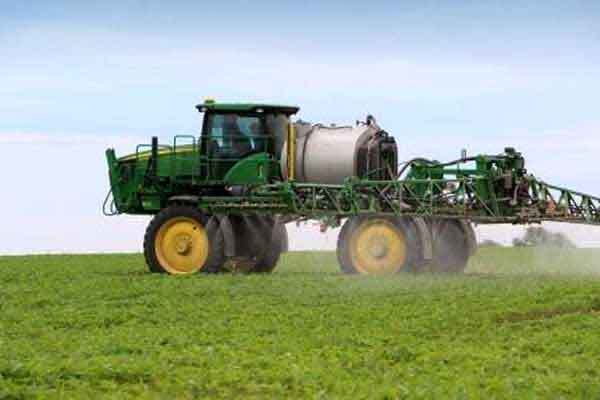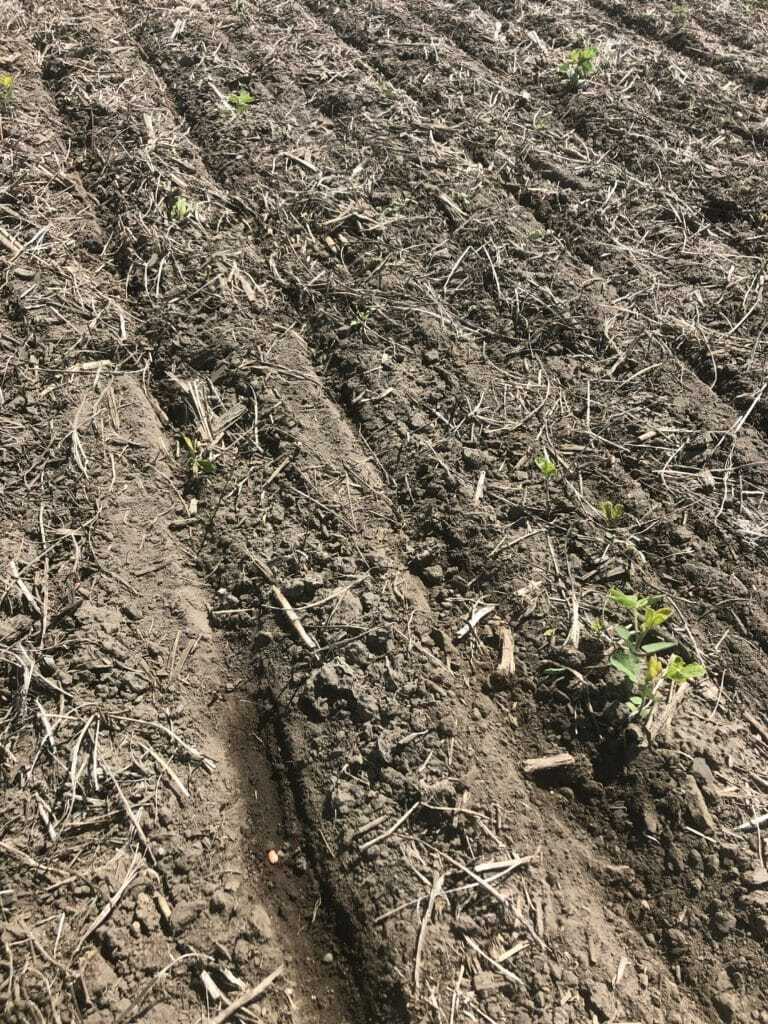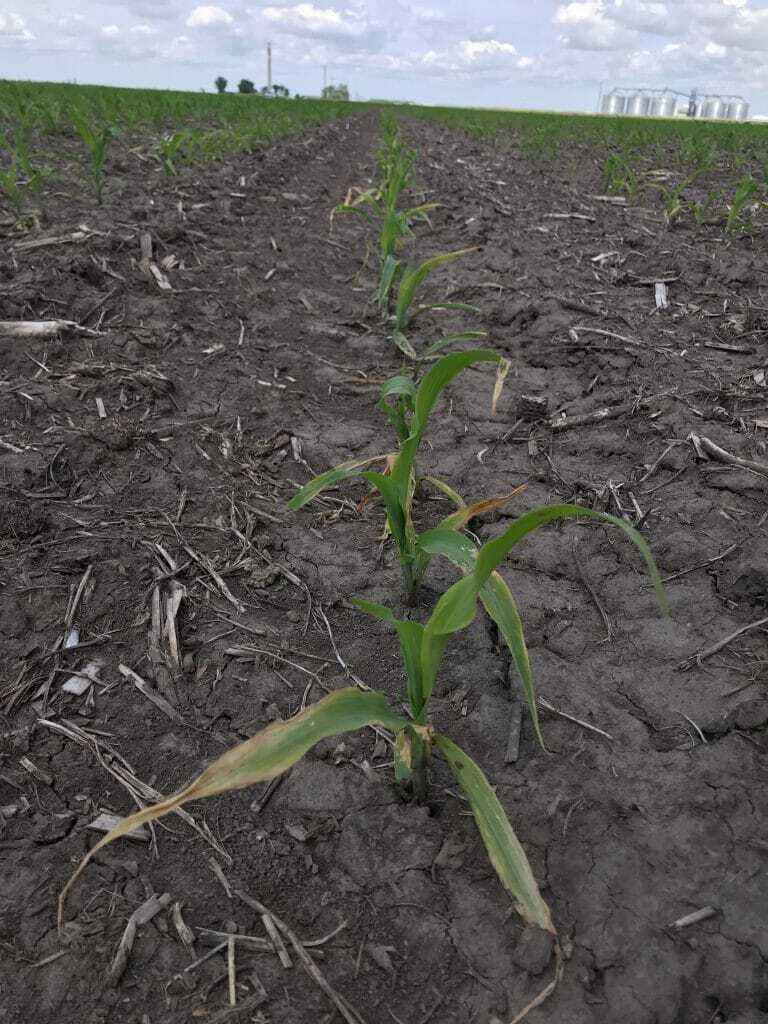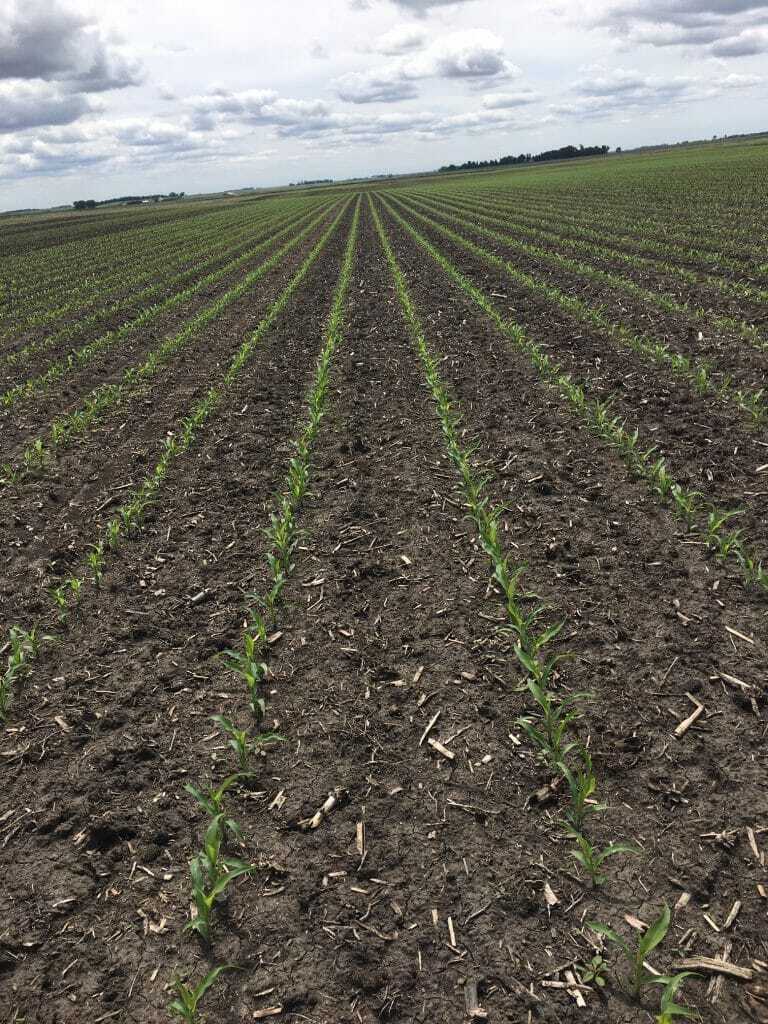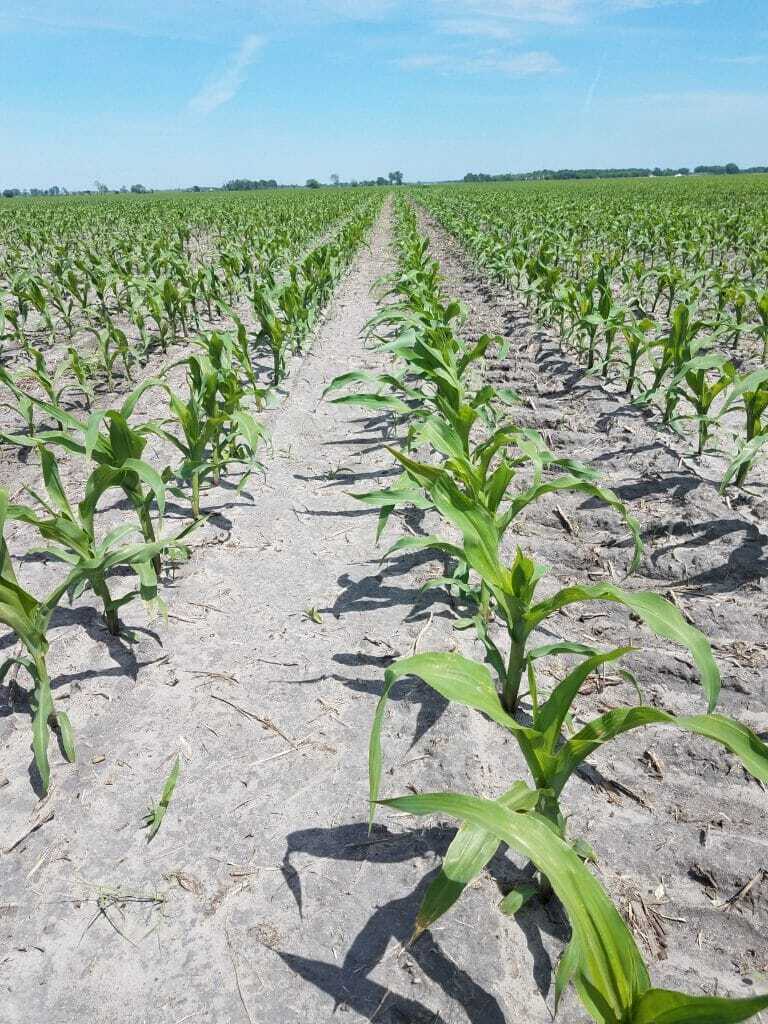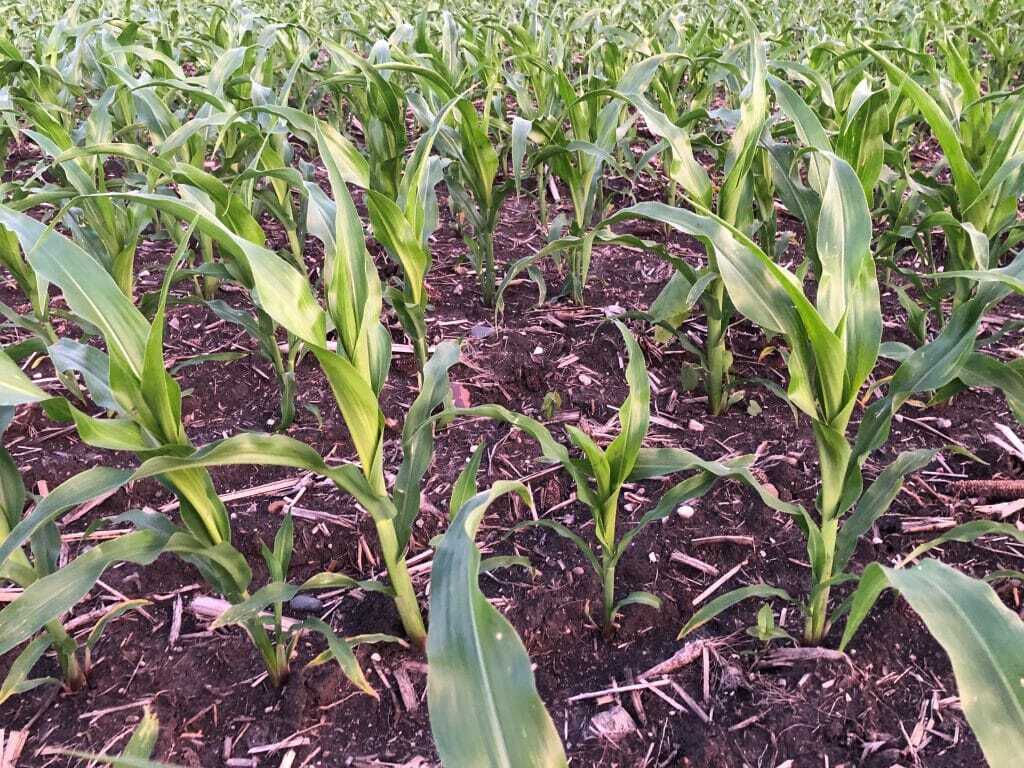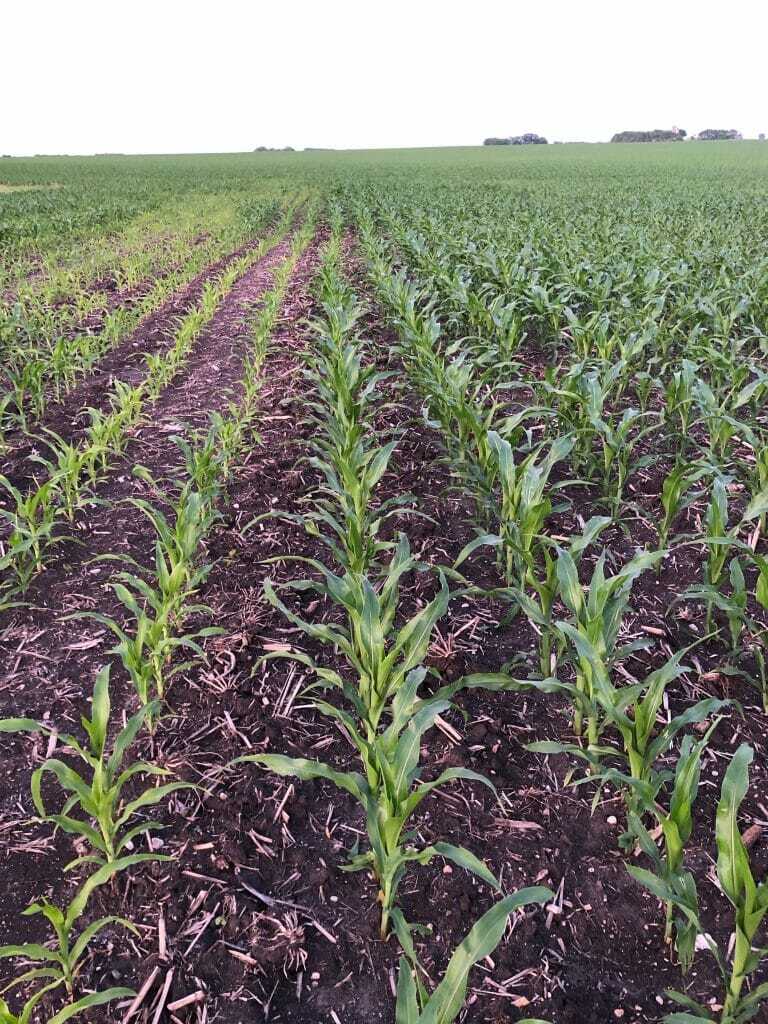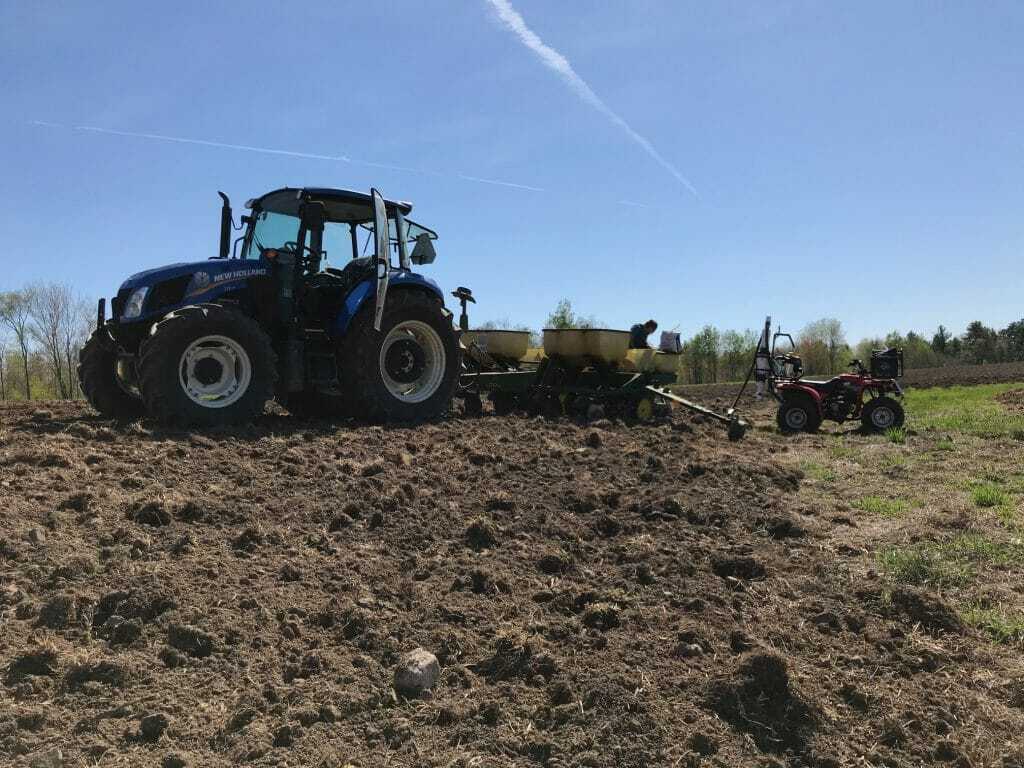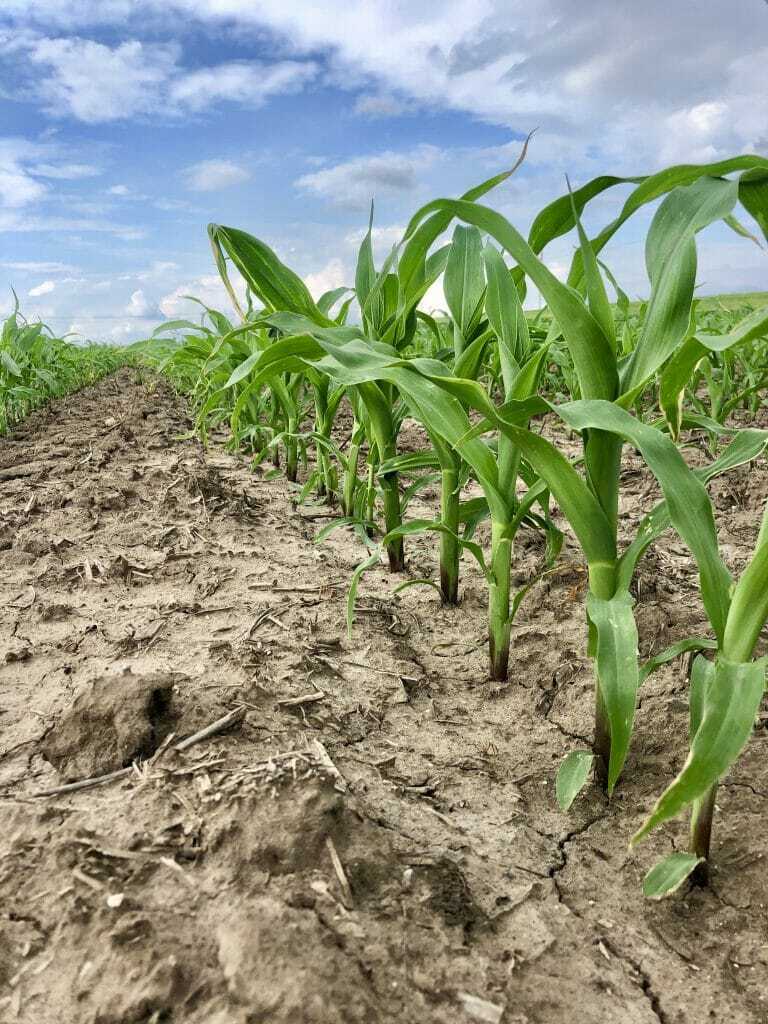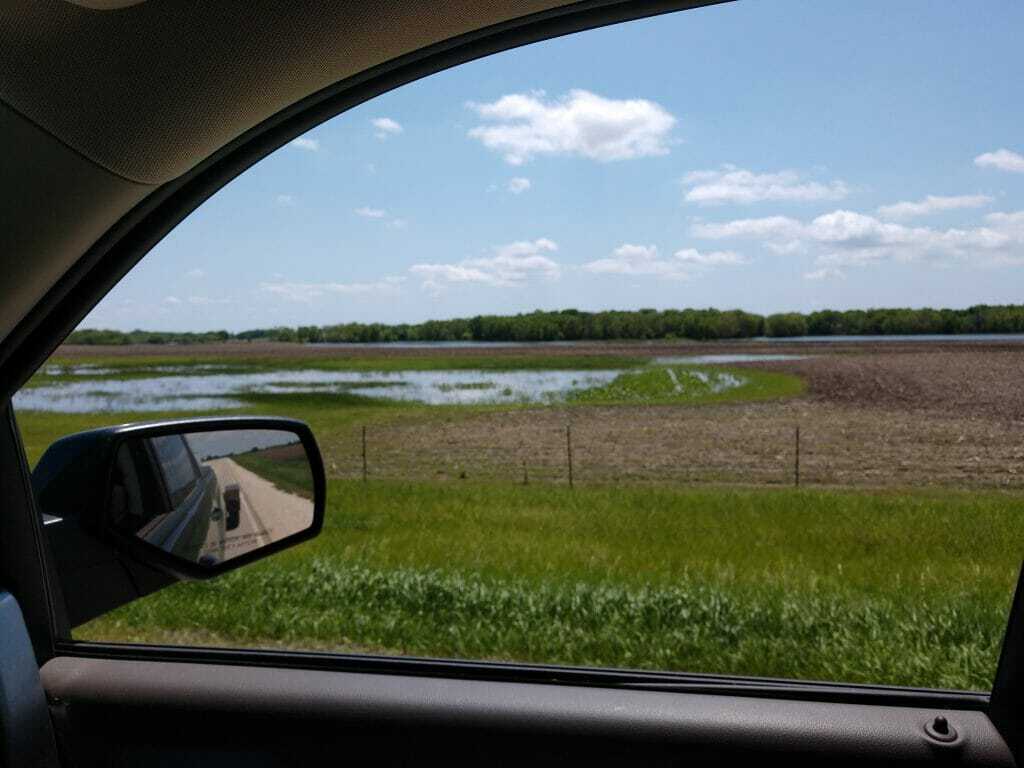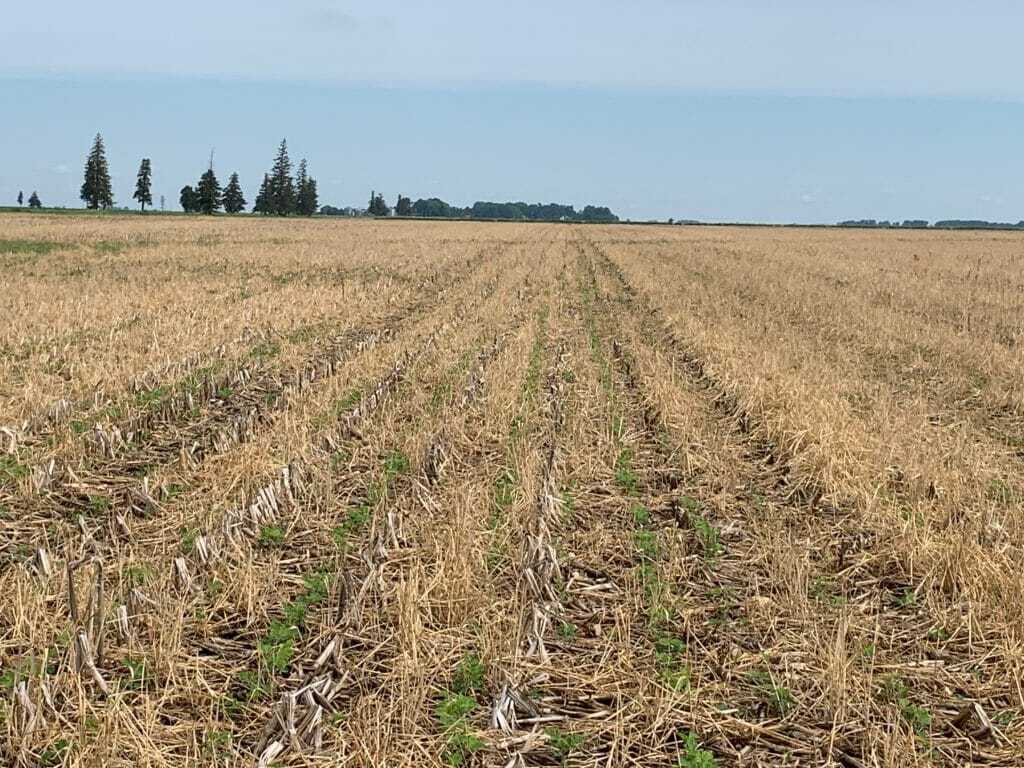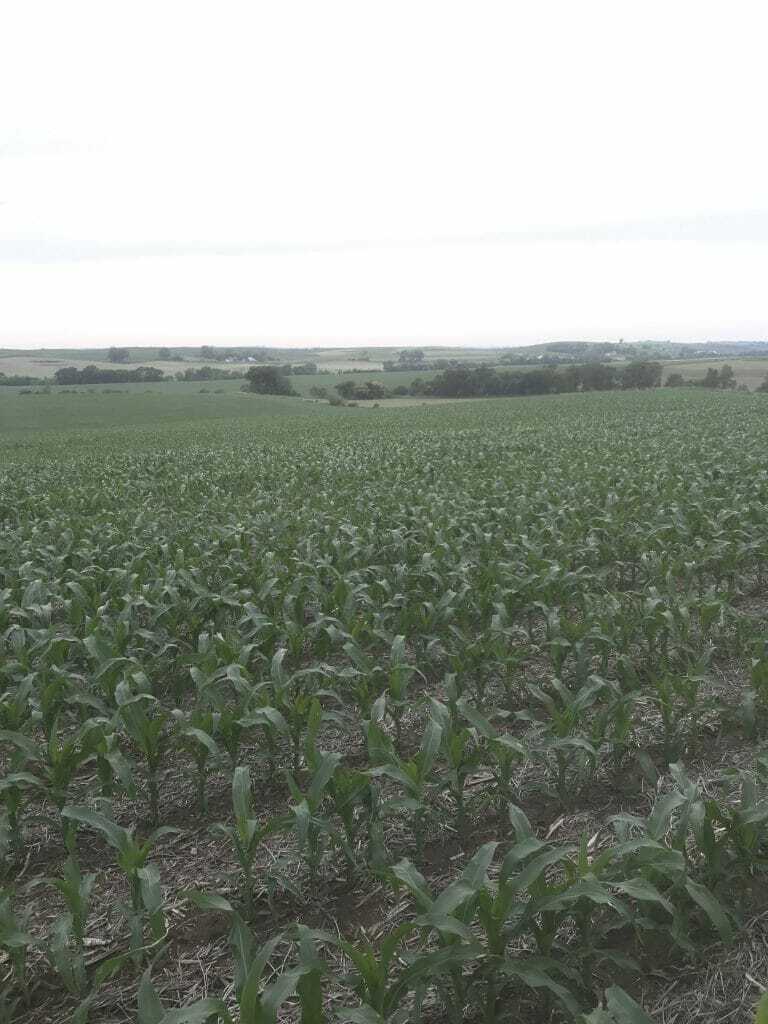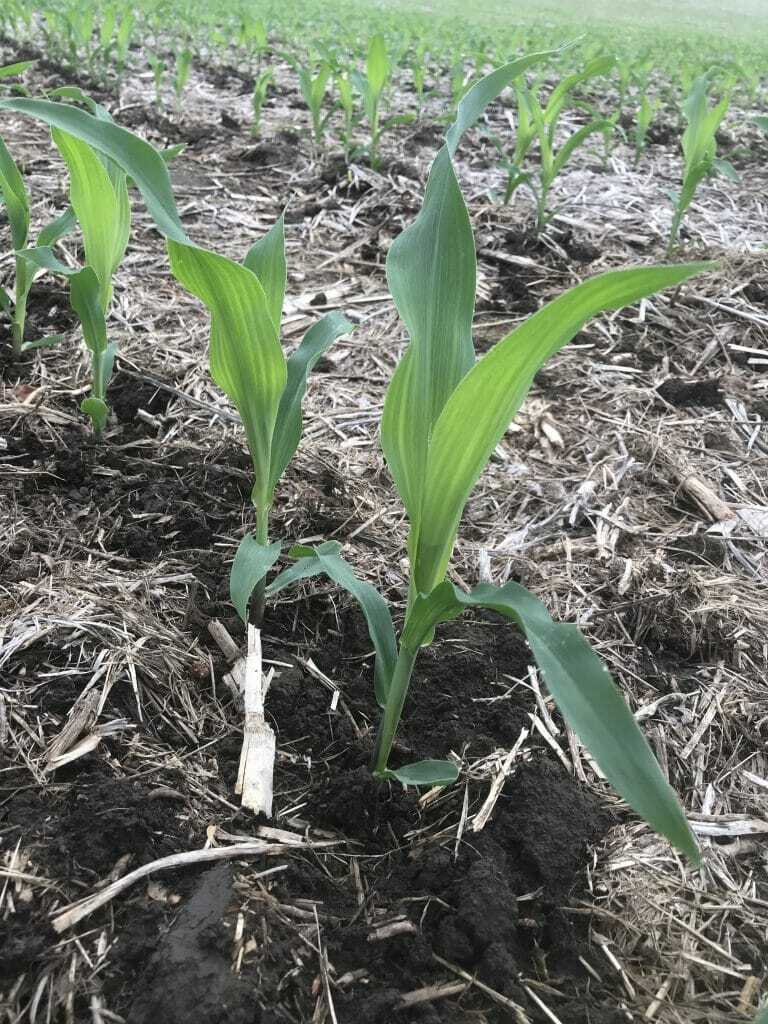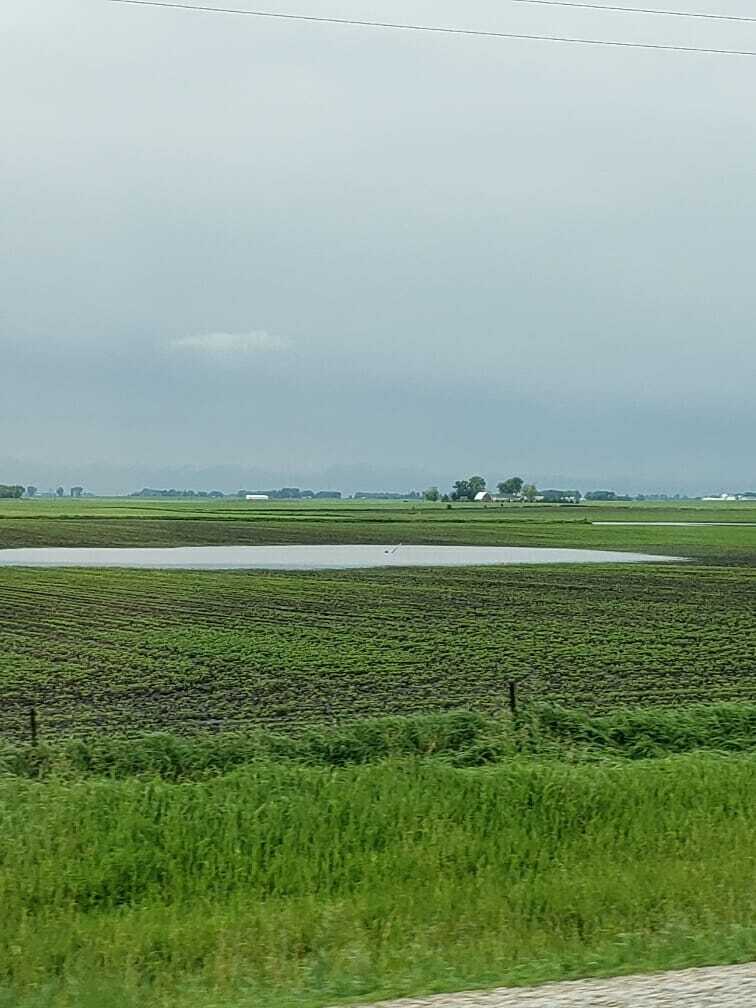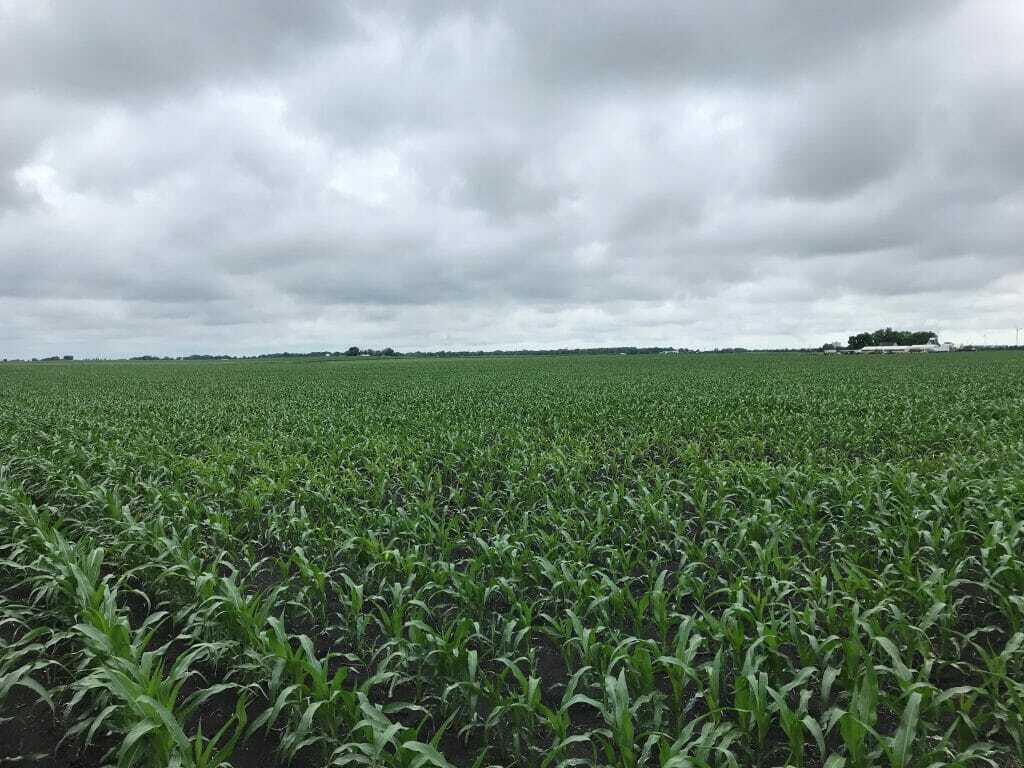June 19, 2019 Crop Reports
Eastern North Dakota
Brian McNamee
I’ve been hearing a lot of buzz about the dates for in-crop spraying of Dicamba. The Minnesota deadline remains June 20. We’re also inching closer to the deadline in North Dakota, leaving us a very small window.
Just a few reminders about North Dakota’s specific rules for Dicamba:
- No applications may be made after June 30 or after the first bloom (R1 growth phase), whichever comes first.
- No applications may be made if air temperature of the field at the time of application is over 85 degrees Fahrenheit or if the forecasted National Weather Service high temperature for the day exceeds 85 degrees Fahrenheit.
- Applications of the product may only be made from one hour after sunrise to one hour before sunset.
- Applicators must maintain a speed of 12 miles per hour or less when applying products.
- Applications must be made with a minimum of 15 gallons of spray solution per acre.
There are many weedy fields, but we can cover hundreds of acres with modern equipment. Sprayers have been rolling like crazy. Be safe and stay positive!
Southeast North Dakota
Gary Geske
It was a tough start to the year, and the challenges continue. This picture shows a soybean field that needs replanting due to cutworm damage. I’ve heard many reports of cutworm activity, especially on cool trashy soils. If you’re in a minimum or no-till environment, scout fields for damage.
Northeast South Dakota
James Keltgen
The end of #plant2019 is in sight! Most farmers in Northeast South Dakota have finished planting soybeans. Crop progress is slow this year. The earliest corn is nearing V6, and the latest planted corn at V1-V2. Most soybeans are in the 2nd to 3rd trifoliate. We will need heat units and a late frost this year to get this crop to maturity.
Corn progress for 2019 this week featuring LH 4454 VT2 PRO RIB.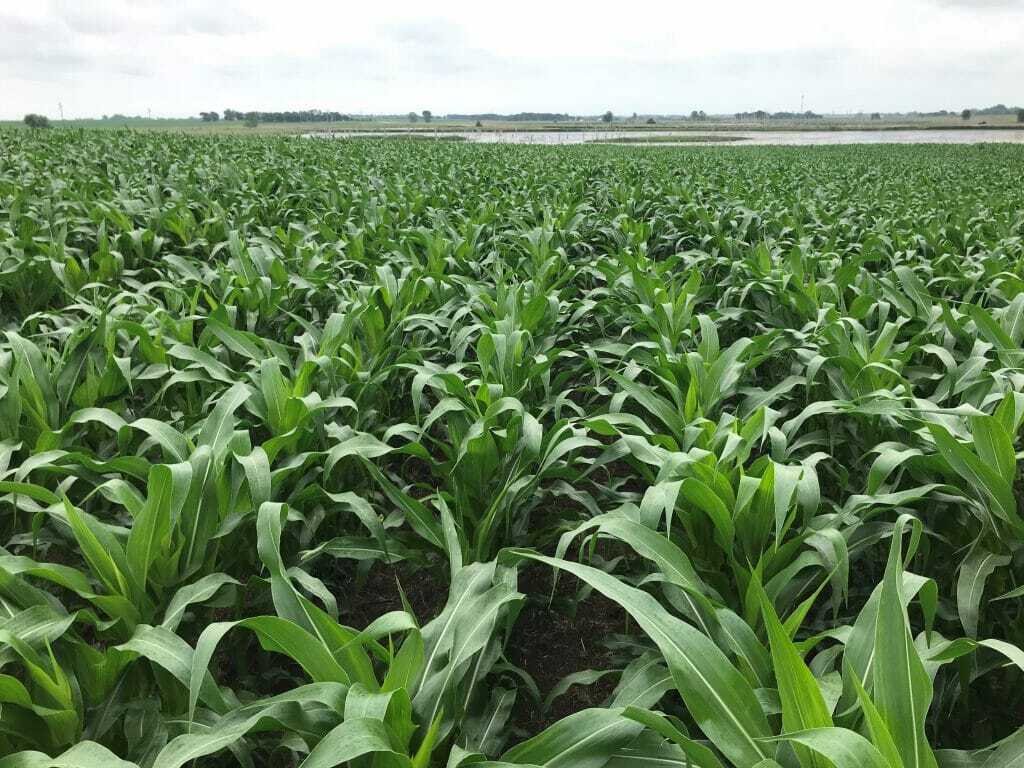
Corn progress in 2018 this week featuring LH 4452 RR.
Southeast South Dakota
Ramie Coughlin
Ladies and gentlemen, we have corn plants! It has been one wild spring. Now that most all corn has been planted, we can start to watching it grow. Crop development lags compared to years past, but planting conditions will be a bigger player in the end result. Fields that were worked too wet have poor emergence due to lack of seed-to-soil contact. Seeds planted into excessively wet soils will battle sidewall compaction all season long. With overflowing water levels, watch nitrogen (N) levels in fields and consider applying additional N throughout the growing season.
Northern Minnesota
Ken Highness
Pictured here is a very nice field of Latham L 3695 VT2 PRO RIB near Barnesville, Minnesota. A lot of corn fields that were planted early have uneven emergence, growth variations across the fields and some yellow plants. I believe the current variation is mostly due to weather, rooting and compaction issue, plus lack of nitrogen supply. Some farmers in my area have been using light tillage to help aerate the root zone since cold rains and wet planting conditions compacted soils. I’m also seeing fields suffering from denitrification. Farmers are side-dressing nitrogen, so the corn plant has more food to meet its needs during rapid growth stages. Keep scouting fields because weed control is important to maximize plant health.
Southern Minnesota
Justin Prokosch
Due to wet planting conditions across southern Minnesota, we’re seeing compaction issues like stunted, yellow corn.
Undesirable planting conditions has also resulted in many cases of uneven emergence in southern Minnesota, like this plant in the center.
Northern Wisconsin
Joe Salter
It’s still wet in areas of Northern Wisconsin. Some farmers are still trying to get seed in the ground between rains. The last of the plots for Northern Wisconsin went in last week. First crop hay is being made.
Southern Wisconsin
Greg Mair
Fields across Southern Wisconsin are mostly planted. Once you drive north of Madison, you’ll more fields that have not and will not get planted in 2019. The early planted corn looks really good, despite the lack of heat units and emergence that took four to five weeks.
Overall, you can tell the fields that have been stressed this spring due to compaction, moisture or poor planting conditions. I’m seeing a lot of average stands in the fields. All things considered, it looks good for what farmers have gone through in 2019.
This field of LH 5245 VT2 PRO RIB was planted May 16, just a few hours before one of many rainfall events. Lucky enough, it stayed wet and helped to get the stand established.
North Central Iowa
Cory Greiman
Heavy rain fell again early this week causing, ponding along the Iowa-Minnesota boarder. This is a common sight from Northwood, Iowa, to Albert Lea, Minnesota.
Northeast Iowa
Craig Haaland
Here’s a good looking no-till field of Latham® L 2186 L in in Mitchell County, Iowa. Soybeans overall look pretty good throughout my area, and the corn is coming along. Farmers had gotten a lot of spraying done until one to two inches of rain fell last Saturday. The 7- to 10-Day weather forecast isn’t looking too promising to get the spraying finished. With weed and insect pressure, it’s important to keep scouting fields!
Northwest Iowa
Darin Chapman
These photos show Latham® L 2249 L planted into 3-foot tall cereal rye that was seeded last fall. A burn down herbicide typically would be applied while cereal rye is 3 to 6 inches tall. Due to a wet spring, the winter rye grew beyond the typical pre-emergent herbicide stage. This stand of soybeans still looks great! This grower has been giving credit to his increased soybean yields to using cover crops the past six years.
Eastern Iowa
Jerry Broders
We finally planted the final soybean plots on June 18, so it’s time to move on to spraying and side-dressing nitrogen.
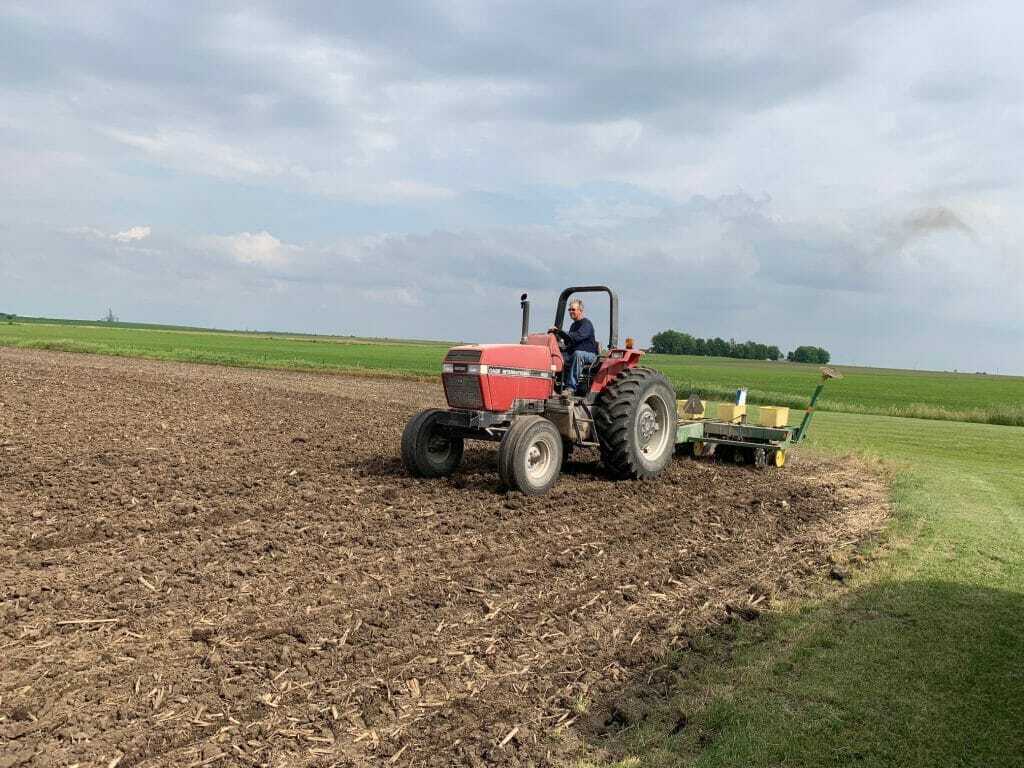
Western Iowa
Larry Krapfl
This field of LH 6477 VT2 PRO RIB was planted June 4, directly across the road from a field that was planted April 20. The only difference is a 45-day rain delay.
West North Central Iowa
Bart Peterson
Near Humboldt, Iowa, 1.8 inches of rain have fallen since June 17 where this photo was taken yesterday. This field got drowned out and was replanted already this season. Hopefully, these ponds drain fast enough so this farmer doesn’t have to plant it for the third time.
Central Iowa
Bryan Rohe
Pythium has been identified in Central Iowa. Pythium is one of the most common fungi associated with seed rot and seedling blight of corn. It infects plants with undeveloped nodal root systems. Several species of Pythium can rot the seed prior to germination or infect young seedlings before or after emergence. While we often see chest-high or even shoulder-high corn by the Fourth of July, some fields will struggle to grow knee-high by this year’s holiday. Heat units will be critical right now as corn continues to develop.
